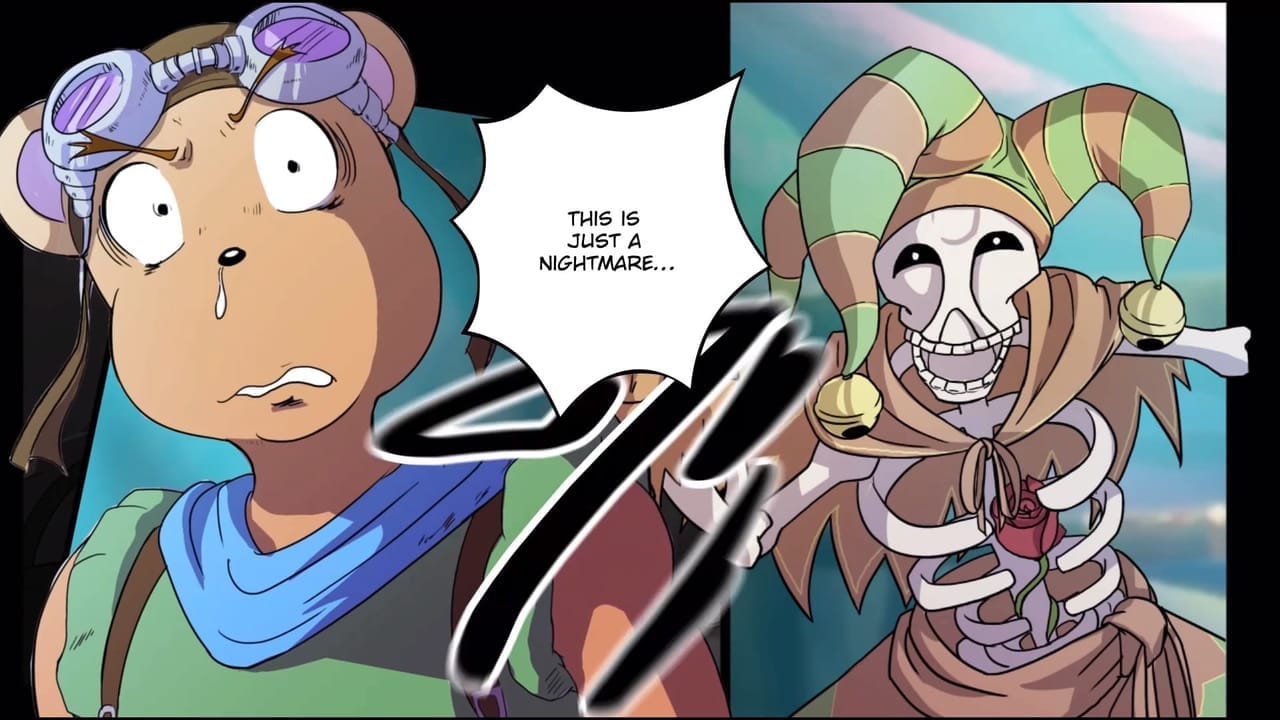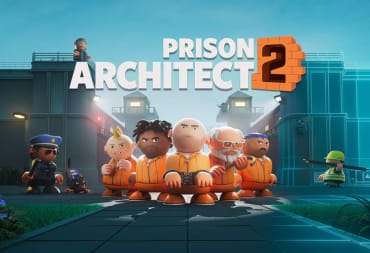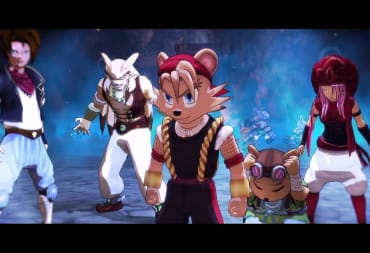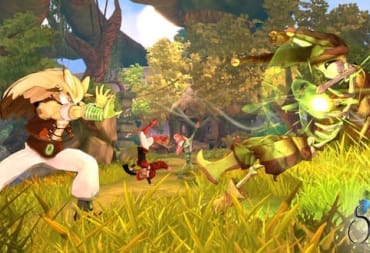After slightly missing its original intended release window of 2015, Shiness: The Lightning Kingdom is finally in the hands of those who helped the project over-achieve on its $100,000 Kickstarter goal. The debut title from French independent developer Enigami, the game is based on a manga written by creator Samir Rebib and takes the form of an RPG with exploration, puzzle elements, and a combat system inspired by fighting games. All this and the manga aesthetic were more than enough to draw me in with interest. While I found myself enjoying my time with Shiness, there are a few areas where the title lacks polish and not all of its moving parts work equally well. This is an ambitious project for a smaller team and there are quite a few areas in which the game falls short of achieving these ambitions. Still, there's a good combat system at its core and fans of the traditional JRPG and those who like a good fighting game or beat 'em up will find a lot to like here.

The story of Shiness: The Lightning Kingdom starts with a bang. After a brief bit of cryptic exposition from Terra the 'Shiness' (a kind of spirit guide and companion who we soon find out can only be seen by one main character), we meet our protagonists in the middle of a dramatic crash landing. The two heroes, Chado and Poky, are separated in the chaos and the player first takes the role of Chado as the pair attempt to reunite. You'll find yourself starting out in a hostile forest, a perfect opportunity to slowly introduce you to the combat mechanics with some simple enemies and to the use of your non-combat, puzzle solving abilities. Once these easily surmountable obstacles are overcome, control switches to the diminutive Poky and you'll get a feel for the magic, or 'Shi', system. This all serves as a suitable tutorial and while the opening portions of the game aren't particularly taxing, you'll start to see how the different character's various abilities can come in handy both in and out of combat.
The plot is at its most interesting in these opening moments, with mysteries being introduced surrounding the Shiness, Terra, and the nature of the two hero's adventure. The two young dog/bear-like humanoids or 'Waki' have left their homeland and the reasons behind why they left and where they are going are established but never fully explored. As events unfold, you'll be introduced to the other playable characters who will share your journey and your objectives will gradually shift in consequence of the conflict this draws you into. This means that ultimately, the original mysteries that pulled me into the plot are never fully addressed. This feeling of disconnection to the events introduced at the start of the game intensifies in its latter stages, where the plot shifts to focus entirely on a character conflict that is only introduced more than half-way through the game with only some loose foreshadowing.

The story itself may be a bit dissatisfying depending on your personal taste but a bigger issue for me is the storytelling. A lot of the exposition in the game feels rushed or as though there are key details missing which can lead to some confusing cutscenes. In many of the game's dungeons, there are self-contained stories being told through optional texts or similar means but then later dialogues will reference these snippets as something you should know. Anyone who misses these optional and often hidden bits of information will be left scratching their heads even more. This confusion is compounded by some very unnatural dialogue. It's hard to pin down whether the issue here comes from the source material or the localization (The game is translated into English from French, with English voice work) but there are frequent issues with odd sounding tenses or wording and characters will often react in ways that seem disproportionate to what is being said.
Fortunately, there's more to this RPG than the story and the rest of the game's systems stand up to analysis much more favorably. The combat on offer here is a bit more precise than you might expect from an action RPG. The system is reminiscent of a fighting game, with separate punch and kick attacks that can be strung together into various button combos when you want to press the attack and a timing based block and parry system that is reflexively demanding. Complimenting the melee combat are varying magic attacks based on your character's elemental affinity.
It's a demanding system that requires reflexes, knowledge of your attacks, and adaptability to varying opponents, to be successful. Fights always take place one on one and, once you've added the various playable characters to your roster, you can swap between one of three selected characters at any time. Your support characters can also cast buff and healing spells automatically based on commands you can preset out of battle. Again, the comparisons to a team-based fighting game are obvious. It's immensely fun to play with this system, learning combos and the best way to execute them against increasingly tough or fast opponents. The only caveat I would add to this is that the combat system is much more demanding than your average RPG and if you're more used to turn-based combat or less tight, hack-and-slash mechanics then you might find it all gets a bit too much as every fight against level-appropriate opponents demands your full attention.

There are a couple of issues that hold back the combat from being quite as satisfying as it could otherwise be. Something that often plagues 3D fighting games is the camera and it's a major issue here. The game allows you to center the camera on your opponent but not permanently lock to them and there are plenty of unworkable angles and awkward scenery to contend with as fights will happen dynamically wherever you encounter an enemy. Centering your view on your opponent also reorients your directional controls if they're behind you, which can all lead to some frustrating moments where you're fighting the camera as much as your opponent. There are a few technical issues that crop up at various points, the aforementioned camera, as well as being unwieldy, will occasionally glitch and lock to a single fixed point, this can't be rectified by re-centering your view and makes fights almost unplayable when it occurs. I also encountered an odd bug that occasionally caused either my character or my opponent to die from a single hit (that wouldn't normally have been fatal) though this only occurred in a couple of specific dungeons.
Outside of combat, things are much as you would expect from an RPG. You'll explore various open maps, interact with other characters, and take on side quests. You'll even make decisions at various points in your interactions that can determine how missions play out, which sometimes affects later events in the case of certain story-based dialogue choices. Don't go thinking this is an intricate and branching tale though. Some of the effects of your choices can lead to different dialogue and story beats within the game but the conclusion will always remain fixed. It's interesting to see something you did in the first half of the game have consequences in later quests but ultimately these choices feel a bit superfluous.
One thing Shiness: The lightning Kingdom adds into the mix that works well are the puzzles that crop up in dungeons and out in the wider maps. They're not the most mentally taxing challenges for the most part but later in the game you'll have to combine your various characters' unique abilities in some interesting ways to solve them. For example, your main character Chado can materialize Menhir (big rocks) to weight down pressure pads but can only throw them in an arc, so you might have to combine this with Kayenne's Telekinesis to reach trickier spots. This adds a nice change of pace from just fighting your way from point A to point B and it also means that there are an abundance of optional secrets to be found on most maps if that's your kind of thing.

A robust equipment system rounds out the RPG mechanics in Shiness. You'll get various armor pieces to enhance your character's stats as well as 'Disciplines' which both affect your stats and can teach you new melee techniques or Shi attacks. There are some interchangeable pieces and some that are specific to certain characters. Later in the game, you can really tinker with this to play to the various characters' strengths and create the ultimate three-man team. There aren't a huge range of differing attacks, each character can learn up to four melee techniques (with three levels of power) and equip up to four spells. Each technique has its place in combat, and adding in a glut of different spells and techniques could have thrown off the extremely tight combat balancing that is in place here.
There's a bit of a dissonance in the game between the art style and the graphical fidelity. The manga aesthetic is consistent throughout and there's a lot of vibrant colors and imaginative scenery. The comic book style storyboards that make up many of the game's cutscenes are also full of great artwork. The actual textures in environments can be incredibly flat and dull though and this can create quite a few moments where the background scenery looks great but what you're seeing up close is muddied and unattractive. For me, the art style carries the game and makes this less of an issue but it's going to be very noticeable if you're used to this generation's 3D animation.
One thing that new players should be aware of about Shiness: The Lightning Kingdom is the game's lack of difficulty settings. This means you won't be able to switch things down a gear if you're having a hard time. It also means that the only way to increase the challenge is to keep your characters at lower levels by avoiding fights. With the absence of a new game plus, this also means that the only real reason to replay the game is to see how some of the different choices mentioned earlier play out. I can only speak to my personal experience here but I felt that there was a nice balance to the challenge level throughout the game and the frequency of encounters lead naturally to keeping my characters level appropriate for the content without any additional grinding. Having said that, a few of the bosses are a bit gimmicky which serves to undermine the challenge level a little.

I came away with a positive overall impression of Shiness, despite a dissatisfying ending that openly baits a sequel, but mileage for others may vary. The confusing dialogue and overly-rushed exposition will definitely be a turn-off for some. The technical issues and general unwieldy nature of the combat camera I mentioned earlier crops up frequently and will certainly cause some frustration whether you enjoy the game or not. Outside of combat I also had a couple of freezes which meant restarting the game and less serious graphical issues which result in floating characters and other oddities.
There are other things I could pick out, some cumbersome controls for non-combat abilities or the somewhat loose platforming gameplay that sometimes comes up. Ultimately, though, Shiness suffers from something that's common to many ambitious indie titles - some of the many aspects of gameplay are much stronger than others and even key strengths like the combat have some seriously rough edges. I found quite a lot to like in the game, the easy to pick up but difficult to master fighting style, the characters themselves, some sprawling dungeons with myriad puzzles and their own side stories, and a charming art style. Every positive has an accompanying negative, and while I wouldn't tell anyone that's interested to avoid this title, I would definitely advise setting your expectations appropriately.
Shiness: The Lightning Kingdom was reviewed on PlayStation 4 with a digital copy provided by the publisher. The game is also available for Xbox One and PC.
Review Summary
Pros
- Engaging and Complex Combat...
- Vibrant Manga Aesthetic...
- Expansive and Interesting Dungeons...
- An Intriguing Plot...
Cons
- ...With a Hugely Frustrating Camera
- ...With Some Horribly Low-res Textures
- ...With Dull and Imprecise Platforming segments
- ...With an Unsatisfying Conclusion
Have a tip, or want to point out something we missed? Leave a Comment or e-mail us at tips@techraptor.net












